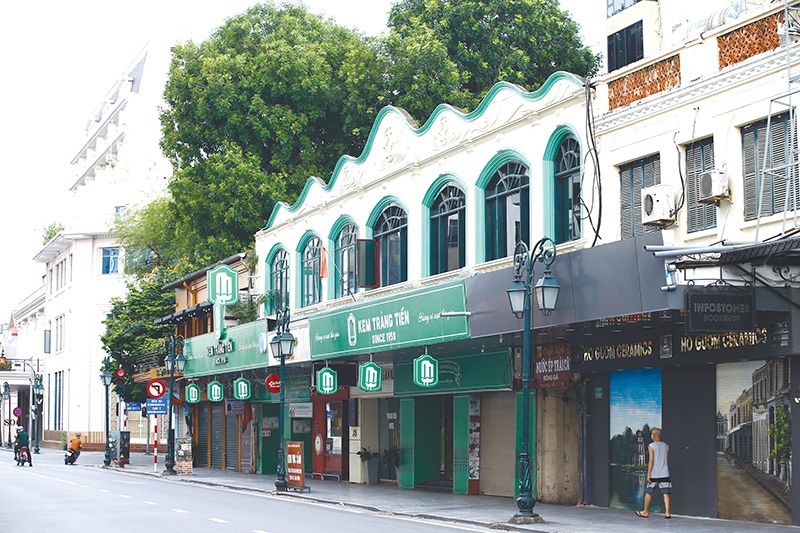 |
|
Hanoi’s Old Quarter has been the most affected area in the city in terms of tourism-based revenues. |
Hanoi’s Old Quarter, one of the most bustling areas in Vietnam before the pandemic, has been paralysed. Nguyen Duy Bien, business director of D&C Art Gallery said, “We have never experienced such a terrible experience. This is too much for our small businesses, which mainly rely on local and foreign tourists.”
The emergence of the pandemic in early 2020 forced D&C to close two of its newly-opened galleries in Hang Gai street and other outlets in the Old Quarter, losing all of its investment capital. After the first social distancing period, the company resumed operations, however, there were very few customers visiting its chain of 13 art galleries.
Meanwhile, PI Auction House in Hang Trong street also suffered the same fate and could not maintain its auctions every two months. Meanwhile, all of its art trading and exchange activities were completely frozen. A representative of PI Gallery said that the gallery suffered enormous pressure to pay rent for the premises in the Old Quarter, which was up to tens of millions of VND every month.
On the same note, Nguyen Viet Nhung, manager of Thang Long Gallery on Hang Gai street said, “Local tourists were the main source of customers for the gallery, while foreign tourists only accounted for one-third of our revenue. Pre-pandemic, we were always busy making transactions from morning to late night.” She added that despite this, the gallery has remained mostly closed since the pandemic hit two years ago.
Traditional handicraft and souvenir sectors may face even greater obstacles as COVID-19 drags on. It is difficult for enterprises selling crafts and souvenirs to do so online due to the nature of their products as customers often desire to see and touch items before making a purchase. Meanwhile, certain crafts and souvenirs are huge and easily broken, making packaging and shipping more challenging for online customers.
The 2021 peak of COVID-19 in Vietnam wreaked havoc on the capital city’s tourism sector and the economic recovery of the Old Quarter. One report showed that Hanoi received 2.92 million local tourists in September 2021, down 57.5 on-year. Pre-pandemic, Hoan Kiem district welcomed 30,000 foreign tourists each and every week, but international arrivals have remained almost non-existent since early 2020.
Despite heavy damage, many small traders are striving to sail through the storm with different strategies like restructuring their operations and boosting digital transformation.
D&C Art Gallery has developed a 500sq.m lacquer art workshop and other satellite workshops in the Ha Thai craft village. The gallery’s chairman Hoang Manh Chien said, “We have made efforts to look for opportunities in the crisis. We take advantage of this time to develop more quality projects to retain the value of Vietnamese products and avoid the extinction of traditional artisan villages. We hope that traditional arts continue to thrive in the local market.”
This is a strategic step of D&C to build up its resources to both proactively respond to the pandemic while also integrating into the worldwide art market. D&C is currently one of the top businesses in Vietnam, supporting and owning the highest number of art pieces.
Indeed, many business households in Hanoi’s Old Quarter have formulated their own plans to overcome the challenges.
Nhung from Dragon Gallery said, “Some loyal foreign customers hope to return to Vietnam soon to partner with us and open a new gallery. Other European customers have also sent us emails about organising virtual art galleries. At present, the gallery is actively restructuring its organisation and boosting online transactions.”
Old Quarter firms have recognised the importance of e-commerce channels to help their businesses, trying to improve logistics and shipping to facilitate the transition from offline to online. They also use real-time analytics tools to gain insights into customers’ shopping behaviour to make better business plans.
Do Son, director of PI Auction House said, “After the success of some international-standard virtual auctions in 2021, we see that domestic transactions have been initially recorded in the global price reference system, which is a big step forward for the Vietnamese market to integrate into the global art market.”
Source: VIR